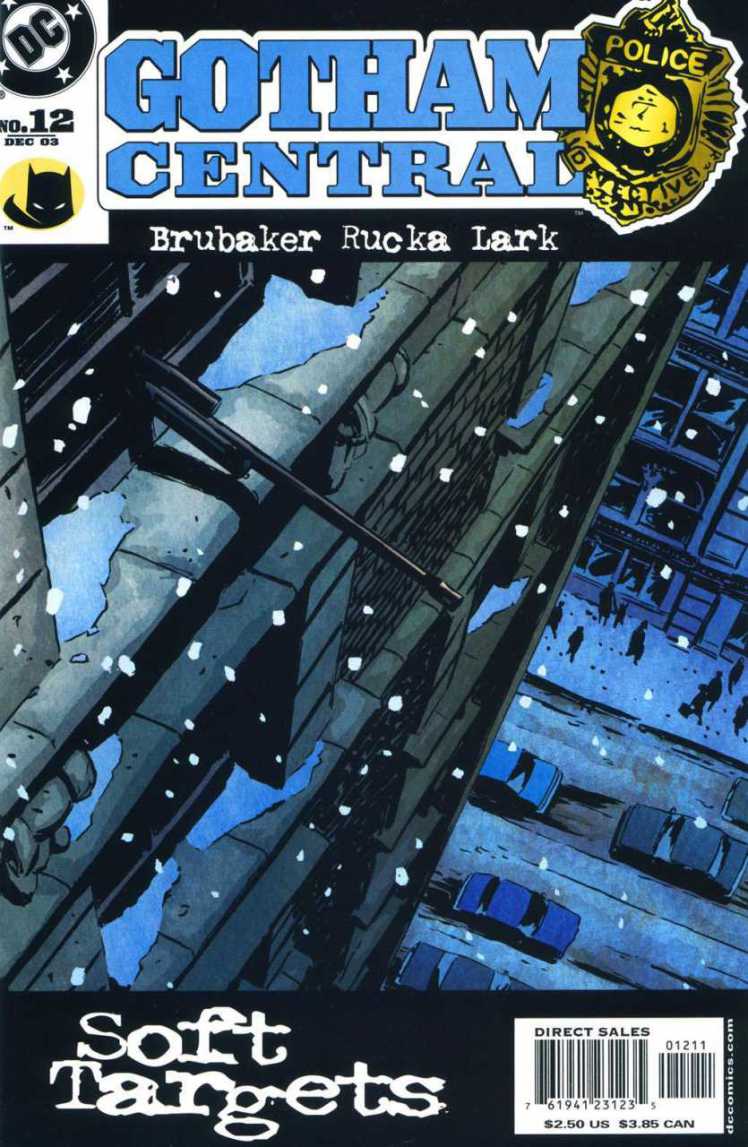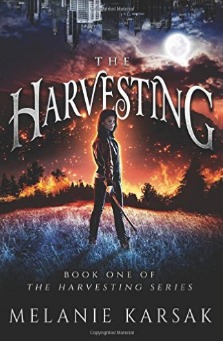
Merry Christmas! Here’s a really depressing and violent story from Gotham Central for us to look at. “Soft Targets” is one of the two best-remembered story arcs from the series, which follows the police officers of Gotham City as they go on their day to day work, which often tangles them into the unpredictable and wild lives of Gotham’s greatest heroes and worst villains. Every so often the police have to break from their role investigating murders, robberies and the like to try and handle the situation when one of Batman’s enemies goes on another rampage, and Soft Targets is one of the coldest villain stories DC have published.
It’s The Joker. In Soft Targets, the Joker picks up a sniper rifle and goes on a killing spree, leaving the police chasing the most unpredictable and terrifying mass-murderer in perhaps comics history. And they have to do it at Christmas. Oof.
Gotham Central is one of those capital-C “craft” comics, with such an incredibly talented and considerate creative team that it’s very hard to tell where their work ends and where your imagination takes over. We all have that voice rattling round your head which continually plays devil’s advocate with stories, and looks for contradictions and cross-references which may or may not have actually been intended. For me, one of those is the use of the cast, which is a huge ensemble encompassing apparently the entirety of Gotham Police Department.
The thing I’ve always wondered is the extent to which we’re meant to know their names. Each volume of the trade starts off with a sprawling list of who everyone is, complete with a Lark-drawn image. However, one thing Michael Lark doesn’t specialise in, despite everything else, is in recognisably different appearances. The white men in particular all tend to look the same, meaning the reader is instinctively going to reach out to the more individual-looking characters shown – Renee Montoya, Crispus Allen, Josie MacDonald. Any given issue of Gotham City has around ten or twelve different characters talking, and it can be very hard to keep them tracked together. Who partners who, and how do they all react around each other?
As a result, I’ve always found that Gotham Central exists in-the-moment, and that serves two purposes. For one thing, it means the reader is far more immediately invested in what happens, as though we’re catching snapshots of these characters lives and getting shown their thought process as it happens, at the time of the panel. More than most comics, this feels like it’s happening as the reader flicks through the pages – there’s no potential energy sat in the panels, thanks to Lark, so instead this feels like a lived-in, breathable world.
The second purpose, which I’m not sure if anyone else shares, is that it highlights the disposability of the characters, within this universe. Whenever a villain from the Batman world shows up, as Mr Freeze does in the very first arc, they immediately steal the spotlight and become the centre of attention for the reader. Inevitably, at the same time they tend to kill some of the police officers. In this issue we lose the Mayor of Gotham, the superintendent of a Gotham school, and possibly the coroner, Nora. We get time with the Mayor and with Nora before they’re shot, and each time the reader rapidly gets to understand their perspective and voice before they’re taken out of the story.
This is a pattern which repeats through much of Gotham Central in general, and I wonder the extent to which it’s planned. The Mayor’s death is a big moment for the Police Commissioner, who is there as it happens, but a few minutes after reading the comic I can’t even remember the Commissioner’s name. It’s all really interesting, and my choice is to believe that it’s intended. There’s meant to be something memorable about the characters, but at the same time there’s also intended to be a disposability at play here. Because overall, the DC Universe has never cared much for the people that have to be saved each and every story. They’re there to act as potential for the superheroes and villains – by grounding the story and focusing on Commissioner Michael Akins (whose name I’ve just looked up) we’re being reminded not just of a wider universe in existence, but of a wider society.
This issue drives that home in particularly striking fashion, as we don’t get a name on the villain until the very last panel. We also never see him: only his gun, waiting in a sniper’s nest to be used at the start of the issue. It’s an ominous token of death which hangs across the entire issue, and the message it gives is very clear. These characters are not safe, and their entire existence can be written out in a second just so the Joker can rack up his kill count. There’s a hugely cynical edge to Gotham Central which starts cutting especially deep in the final arc, which I hope to write about one day; but for this story in particular the reader lives and breathes every page turn in the knowledge that someone else could get shot at any moment.
It reflects the society of Gotham itself, and the general public who have to live with that same fear. For them this is life and death, of course, but for us it offers a brief view into the near-constant panic and fear which the citizens living in Gotham would experience every day. More than any other Batman-orientated story, the reader lives in the same state of continuing tense worry that the characters experience. That wouldn’t be possible if every member of the cast had a truly distinguishing feature, or memorable names. Whether Brubaker and Rucka planned it or not, the sheer size of the cast means the reader has to choose how many of them to connect with – and then wait to see who lives or dies.
Gotham Central #12
Written by Ed Brubaker and Greg Rucka
Art by Michael Lark
Colors by Lee Loughridge
letters by Clem Robins





